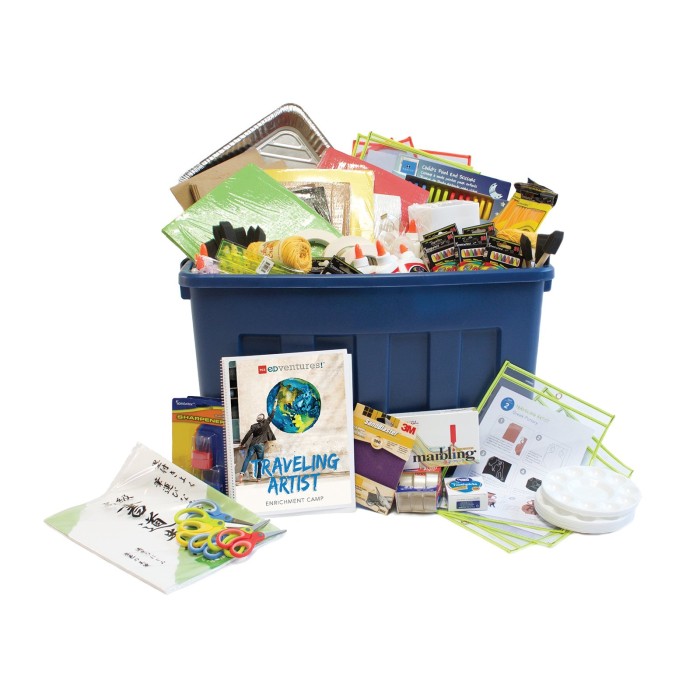Edventures Traveling Artist Enrichment Program
Explore distinct cultures while creating a variety of art projects in your own school!
Discover the importance of Aztec masks, North American tipis, and Alaskan totem poles through engaging hands-on art activities for kids. 12-part curriculum highlights the creative minds in various cultures throughout the world, along with the influence and importance of the art they produce. Lessons begin by introducing students to the history, legacy, and impact of art. Then they learn how to construct their own versions through interactive projects! 400+ piece kit is ideal for up to 30 students and includes paint, crayons, paper, foam board, glue, paintbrushes, scissors, instructor guide with worksheets, and much more. Store items in the included tote. Full contents list below. Recommended for Upper Elementary and up.
Kit includes:
- Acrylic Paint, Set of 2 (1 Ea Black, Green)
- Aluminum Pans, 5 Ea
- Calligraphy Paper, 100 Sheets
- Cardboard, 15 Sheets
- Tape with Dispensers, 5 Ea
- Colored Pencils, 10 Packs
- Construction Paper, 12 Packs
- Crayons, 10 Packs
- Cups, 10 Ea
- Dry-Erase Pockets, 10 Ea
- Foam Boards, 100 Ea
- Glue, 100 Ea
- Marbling Ink, Set of 6
- Masking Tape, 5 Rolls
- Paint Palettes, 12 Ea
- Paintbrushes, 30 Ea
- Pencils, 3 Packs
- Pencil Sharpeners, 5 Ea
- Rulers, 30 Ea
- Scissors, 30 Ea
- Toothpicks, Set of 100
- Yarn, 5 Ea
- Storage Tote, 1 Ea
- Instructor Guide
Click here to download a sample of the NGSS-aligned curriculum manual.

